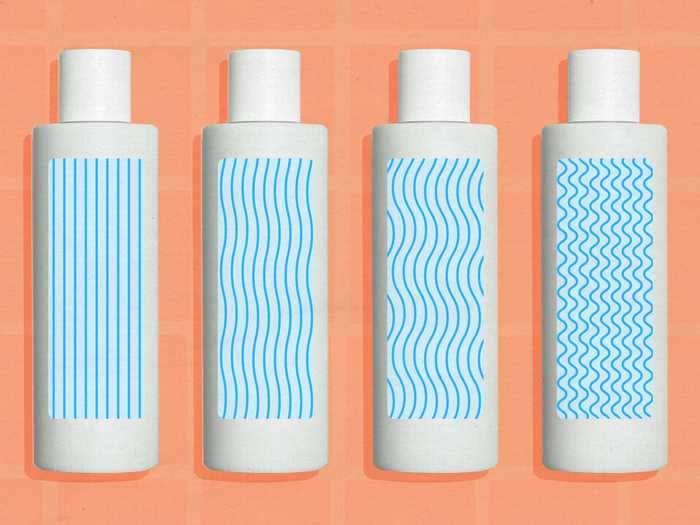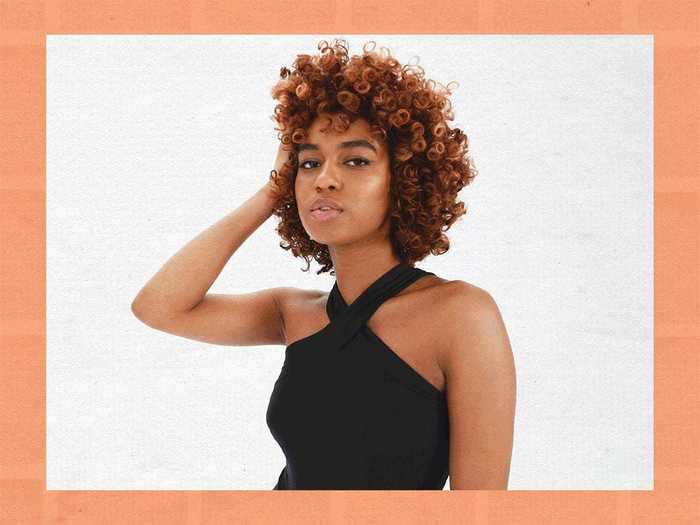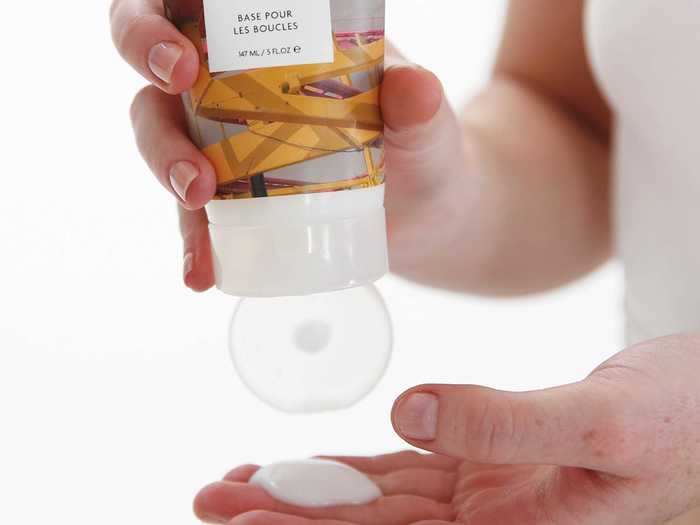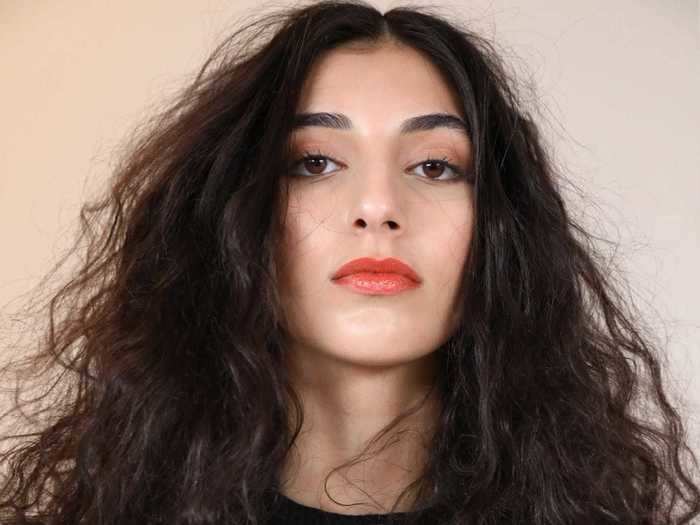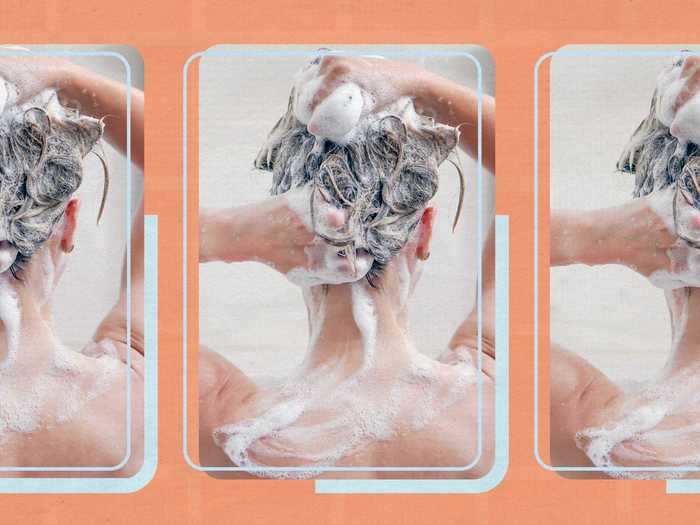In order to figure out a maintenance schedule that works for you, identifying which category your hair falls under — straight, wavy, curly, or extra curly (coily) — is a good place to start. However, according to Hannah Reid, a stylist at Nine Zero One Salon and a certified trichologist technician, there are many factors that determine someone's hair type. These include hair texture, structure, porosity, and density.
1. Hair Texture
Your hair texture refers to your natural curl pattern. It's established by your genetics, but can be altered through chemical processing and environmental factors. Since certain textures of hair respond differently to certain types of shampoos, it's good to identify your hair type first and foremost.
It's easy to determine what your natural hair texture is. All you have to do is shower and let your hair dry without any product in it.
"If it dries without a bend or S shape then your hair is considered straight (type 1)," explains Reid. "If your hair dries with a slight bend or S shape then your hair is considered wavy (type 2). If your hair dries with what looks like a loop pattern or defined curl, your hair is curly (type 3). If you have extra curly or coily texture (type 4) your hair will have spirals or a zig zag pattern."
Straight hair tends to require more frequent washing and lighter-weight formulas, while curlier hair can usually handle denser, more moisturizing shampoos and longer times between washes.
2. Hair Structure
Your hair structure refers to the diameter or thickness of one individual strand and is categorized as either fine, medium, or thick (coarse). In order to determine your hair structure, Reid suggests plucking a single strand of hair from your head and laying it next to a piece of sewing thread.
"If your hair strand appears to be thinner than the thread, you have fine hair," Reid tells INSIDER. "If it appears thicker than the thread it is considered thick (coarse). Anything in between is medium."
Fine hair generally requires more frequent washing than coarse hair.
3. Hair Density
People often confuse hair structure for hair density, but they are not one and the same. While hair structure is determined by one single strand, your hair density refers to how much hair is on your head, per square inch.
The average person has roughly 2,200 strands of hair per square inch, but to count out that many pieces per square inch would be tedious. Instead, in order to determine your hair's density, Reid suggests putting your hair to the ponytail test.
"Put your hair in a ponytail then measure the circumference of your ponytail," instructs Reid. "If it measures less than 2 inches then it has low density. If it measures 2 to 3 inches then it's medium, 3 to 4 inches it's high density."
Low-density hair generally requires more frequent washings.
4. Hair Porosity
Like a sponge, your hair is porous in that it absorbs and retains moisture and oils. The question is, how well does it do this?
If your hair is highly porous, meaning the cuticle layer has gaps and tears in it, it absorbs moisture too quickly and releases moisture at a very high rate, says Reid. "This makes the hair dry, brittle and easily prone to breakage." But if your hair has low porosity, the cuticle layer doesn't open enough and barely absorbs any moisture at all. This can lead to product buildup, "because it is not actually penetrating into the hair shaft."
Generally, low-porosity hair will need to be washed more often due to product buildup, while high-porosity hair can go longer between washes.
Hair with medium porosity — in which case the cuticle doesn't open too much or too little — is the easiest to manage, Reid says. It allows in and retains just the right amount of moisture to make styling and coloring a breeze, and generally looks the healthiest, too.
So, how can you determine your hair's porosity? The easiest way is to fill a bowl of water and place one strand of hair in it, Reid says. "If it sinks to the bottom that means you have high porosity. If it floats below the surface, but doesn't touch the bottom, you have normal porosity. If it floats at the top of the water, you have low porosity."

